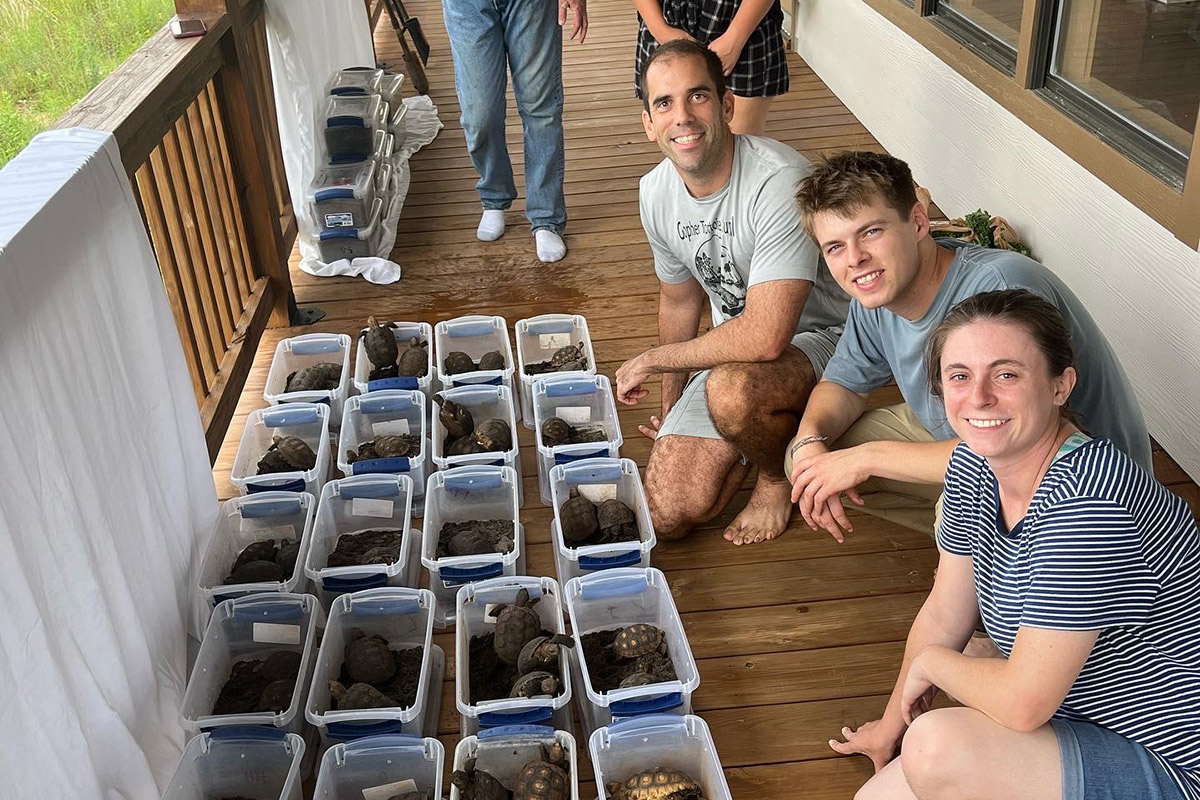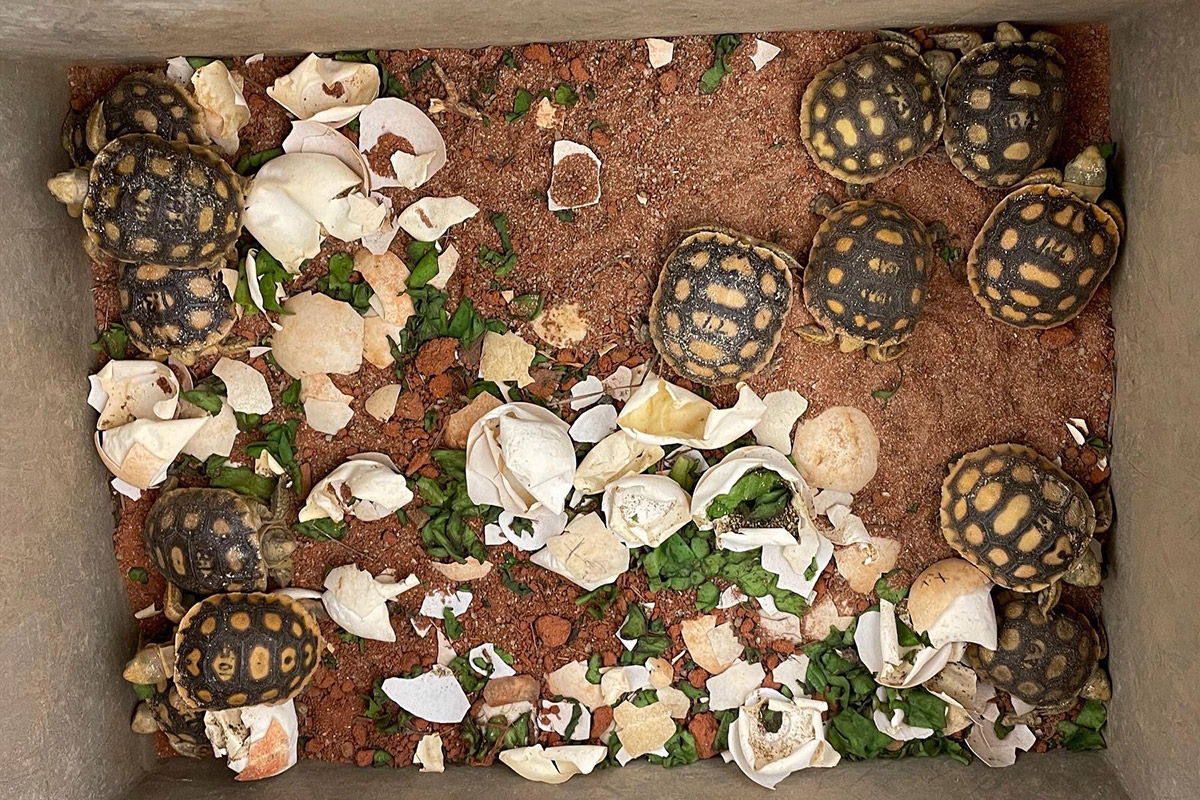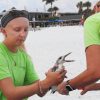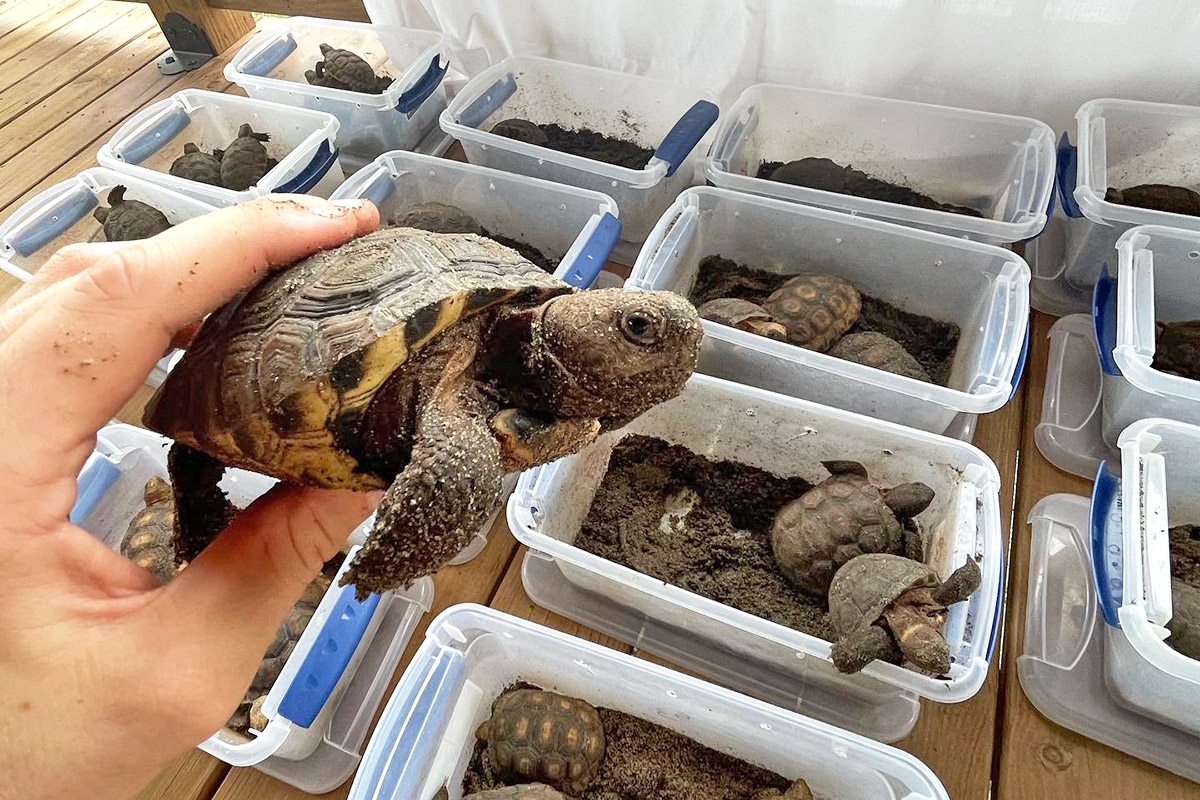
It was a bittersweet parting for Assistant Professor of Biology Jeff Goessling, Ph.D., and his student workers as they released 98 young gopher tortoises back into their natural Alabama habitat on Aug. 29.
The tiny reptiles had been harvested as eggs from burrows and then hatched and reared in the Eckerd College greenhouse for more than a year as part of a Gopher Tortoise Head Start Program collaboration among Goessling’s laboratory, U.S. Fish and Wildlife Service, the Alabama Department of Conservation and Natural Resources, and the Birmingham Zoo.
“This project is the culmination of several years of ongoing work and more than $210,000 in grants from the Alabama Wildlife and Freshwater Fisheries and the USFWS Cooperative Endangered Species Conservation Fund over the past couple of years,” Goessling says. “It has clearly involved many Eckerd students in growing the animals.”
Goessling employed students year-round to care for the baby tortoises, monitor their growth and conduct various studies on the animals in preparation for the day they would return to the home they’ve never known. Two Eckerd College graduates and alumni of Goessling’s lab, Leandra Grantham ’22 and Rachel Test ’22, spent the summer monitoring the adult populations of gopher tortoises near Florala, Alabama, to prepare for the release of the young.
Gabe Weikert, a sophomore biology student from Westerville, Ohio, was given the awesome task of transporting the tiny animals six hours north in his car accompanied by Goessling.
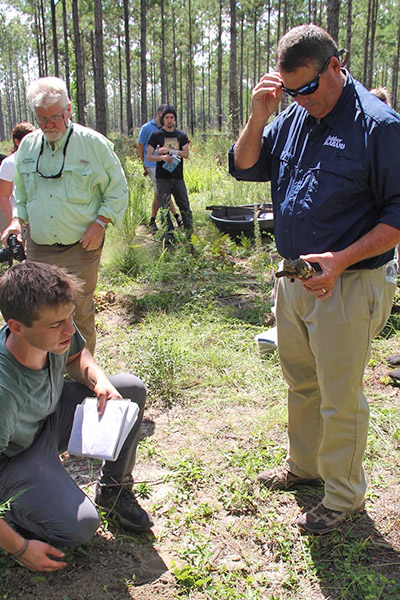
Sophomore Gabe Weikert (left) with Alabama Department of Conservation and Natural Resources Commissioner Chris Blankenship.
It took five days of preparation—tagging, drawing blood and measuring—before hitting the road. Gabe made sure to crank up the air conditioner to keep the temperature low to deter the tortoises from getting agitated in their soil-filled containers on their first, and hopefully only, road trip.
Photos: Professor Goessling (left) with Gabe Weikert ’25 and Rachel Test ’22 alongside the gopher tortoises; a group of freshly hatched tortoises, eggshells still visible, waiting to join the Eckerd College headstart facility, credit Gabe Weikert ’25.
“The amount of activity for gopher tortoises is based on their body temperature, so keeping them cool helped them stay calm during the drive,” Gabe recalls. “Overall it was not a bad ride.”
Once they arrived, Goessling’s team set out to dig burrows for each reptile and prepare for the big release event. Dignitaries from federal and state government included USFWS Southeast Region Director Leopoldo “Leo” Miranda-Castro, Alabama Department of Conservation and Natural Resources Commissioner Chris Blankenship, and media from Outdoor Alabama magazine. Around 30 people got hands-on experience during the release as they deposited each numbered tortoise in a numbered burrow and reported back the location to Gabe, who maintained the spreadsheet.
Once every baby was released in a burrow, the crowd dissipated, and Goessling’s team began monitoring the tortoises’ movements to make sure the release site was suitable. Gabe returned to Eckerd after five days, while Grantham and Test continue the work.
Gabe admits his relief was tinged with sadness as he watched the tortoises he had seen hatch when he’d first arrived at Eckerd start their new lives. The tortoises moved very little, some opting to dig new burrows near their manmade dwellings, and began integrating into the habitat.
“They are competent,” Gabe says. “Sometimes you never know until they are out there, but they are doing fine.”





